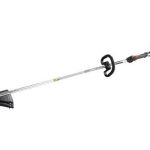For a gardening or lawn tool to perform well at its task it needs to be sharp. There is a plethora of ways to sharpen tools. These include angle grinders, bench grinders, or grindstones. But, perhaps the easiest method is to use a file. It’s inexpensive and provides greater control than a fast-spinning wheel that generates sparks.
To get the best results, it is suggested that you follow a certain technique when sharpening. The techniques described here can be used on any lawn or garden tool that has a blade or cutting edge.
Prepping Tools For Sharpening
The tool should be cleaned before sharpening. Use a steel wool pad or wire brush to scrape off any rust. If this isn’t done, the rust will wear down the teeth of the file.
Sharpening A Tool
It is suggested that you start out with a mill file. It should be about 10-inches or 12-inches long and can be purchased from any home center or hardware store.
Files are available with different teeth patterns and coarseness. A mill file referred to as a bastard cut mill file is an ideal all-purpose sharpener that provides a good edge on lawn and garden tools without being overly aggressive. Too much force when sharpening a tool could conceivably damage the blade.
About six or so even strokes should result in a good edge to the tool.
Be sure to push the file over the blade. Don’t pull it. The tools you’ll be sharpening feature a bevel cut. A bevel cut is a cut angle other than 90 degrees. Lay the file flat against the edge following the bevel. Take a few strokes with the file and then check the results. The edge should be uniformly shiny. If it’s not, then you’re not holding the file in the proper position.
Sharpening A Mower Blade
Don’t neglect the blade on the lawn mower. A sharp blade on a mower assures that you mow faster, preventing the engine from bogging down. A sharp blade is also better for the grass. A dull blade tends to tear the grass, which stresses it making it vulnerable to fungi and disease.
To remove the blade from the mower, lift the mower so the air filter is facing up. This prevents the gas from flowing onto the filter.
Mark the blade with spray paint or a piece of tape before removing it so you know how it’s positioned when you reinstall it. You should also remove the spark plug wire and tape it back to assure that the engine doesn’t accidentally start if you turn the blade when removing it.
Place the mower blade in a vice to assure that it’s under control. Start the sharpening process from the inside of the blade and follow the blades cutting edge. Be sure to smooth out any rough spots or nicks. Don’t get overenthusiastic. The blade doesn’t have to be sharp enough to shave your face. In fact, if it’s too sharp, the blade could dull quicker. Most recommend that the blade should be as sharp as a butter knife after the sharpening process is completed.
File both ends of the blade and then assure it’s balanced by hanging it horizontally on a nail. If one side dips, then it’s heavier than the other side. To balance out, continue to file a little from the heavier side until it’s balanced.
Sharpening Pruning Shears
Sharp pruning shears assure that you can prune faster and make clean cuts on the branch or vine rather then chewing it. It’s good for the plant and achieves the task with less effort. Sharping the edge of pruning shears takes just a few minutes.
To sharpen the shears, place it in a vice and hold the file flat against the bevel edge as you work it. Start the process at the innermost section of the blade and push the file away from you. Make sure that you follow the curve of the blade. Don’t apply a lot of pressure. Sharpen the blade with the bevel. There is not need to sharp the other blade of the shear because it doesn’t cut.
Sharpening Hedge Shears
A sharp blade on hedge shears makes the job of cutting a lot easier. The process is less demanding on your hands and shoulders. It is also healthier for the plant.
To sharpen hedge shears, clamp one of the blades in a vice. Push the file along the edge working the file from the inside out. As you go through the sharpening process, hold the file so that it is flat on the beveled edge and push it along the entire length of the blade.
Remove from the vice and then clamp the unsharpen blade in the vice and repeat the process.
Sharpening Dull Shovels

Sharpening the cutting edge of a shovel makes the process of digging so much easier. Just like a cutting tool like shears, the edge of a shovel can get dull after encountering tree roots and rocks over a long period of time.
Place the shovel in a vice. File from the sides toward the center of the shovelhead. The bevel edge will probably be about 45 degrees, so tilt the file at that angle as you proceed.
Once the tool is sharp, spray WD-40 or something similar on it. It will prevent rust and assists tools to open and close easily without sticking. Use a cloth to wipe away any excess lubricant and metal shavings on the blade. Don’t wipe along the newly sharpen blade. Instead, wipe along the side of the blade.
(Source: popularmechanics.com)






